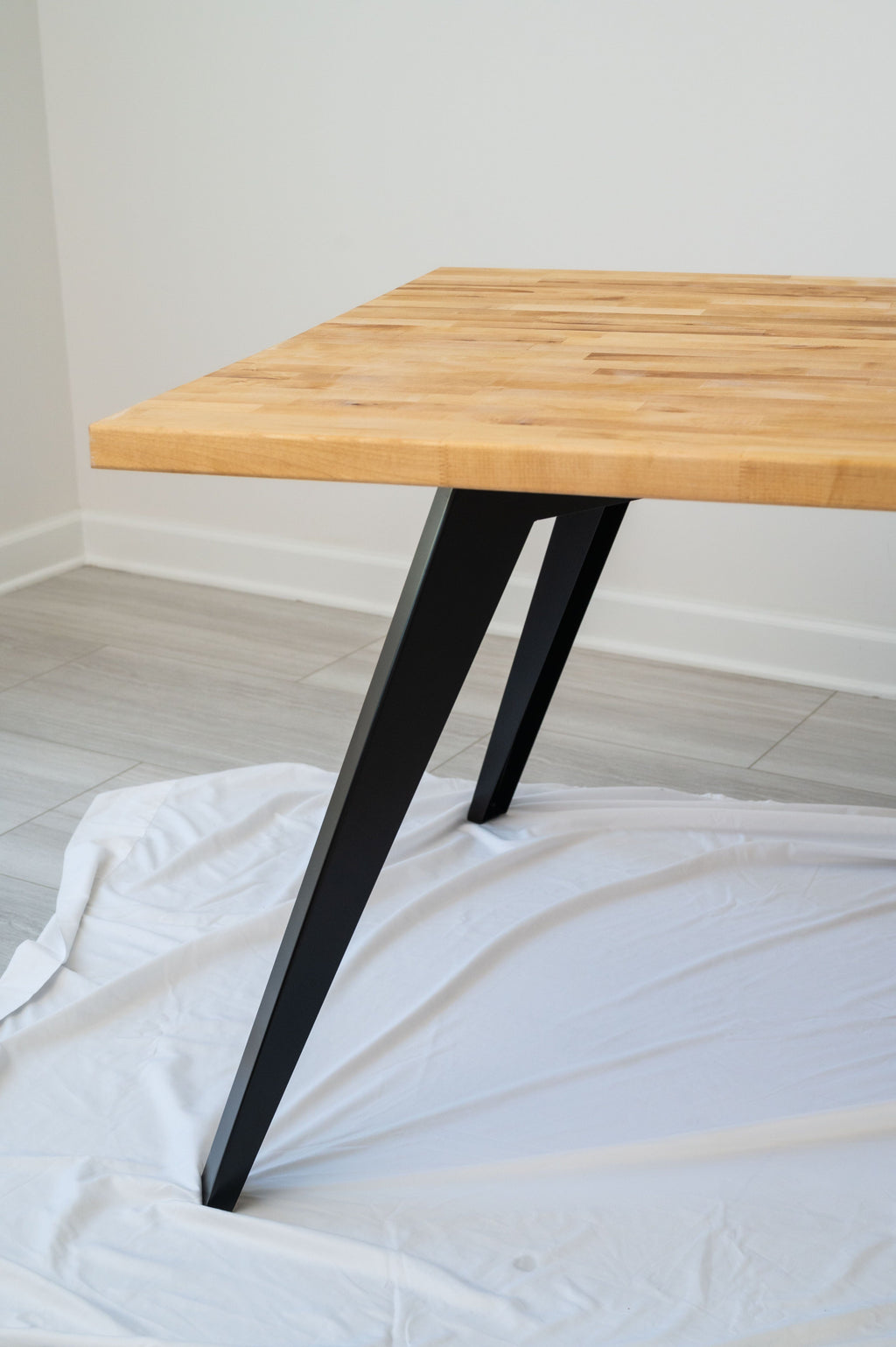Key Variables to Remember for Table Legs Wood Choices
When picking wood for dining table legs, a number of important factors warrant mindful consideration to make sure both capability and visual appeal. The option of wood type, characterized by its toughness and one-of-a-kind grain patterns, plays a pivotal role in the overall design and longevity of the piece.
Wood Types and Characteristics
When selecting wood for dining table legs, it is vital to comprehend the special features of numerous timber types. Different woods offer distinct benefits and negative aspects, affecting both the longevity and visual allure of the ended up item.
Oak, known for its remarkable longevity, likewise features a noticeable grain that can add personality to the table. Cherry wood, with its abundant color that grows over time, offers an elegant appearance but might require even more maintenance to stop scratches.
On the other hand, softwoods like pine and fir are a lot more cost effective and simpler to function with, yet they are less long lasting than hardwoods. Pine is light-weight and includes a warm, rustic appearance, making it a popular choice for laid-back eating settings. Nevertheless, it is more prone to damages and scratches.
Comprehending these features will assist in making an educated decision to guarantee the legs of the table meet both practical and visual needs.
Grain Patterns and Aesthetic Appeal
Selecting the appropriate grain pattern can considerably improve the visual allure of dining table legs. The wood's grain is not simply a visual attribute; it conveys an unique character and appeal to every item. Various wood species exhibit unique grain patterns, ranging from the straight lines of maple to the complex swirls of oak and the striking number of walnut. These patterns can stimulate numerous designs, from rustic to modern-day, making it vital to select a grain that aligns with the overall design of the dining space.
Moreover, the orientation and range of the grain can affect the viewed size and elegance of the table. Larger, extra obvious grains might provide a bold, significant result, while finer, subtler grains can produce a refined, underrated appearance. Additionally, the ending up process can further boost these patterns, highlighting the natural elegance of the wood and bringing out abundant shades.
Inevitably, the option of grain pattern ought to integrate with other layout aspects, such as the tabletop and bordering furniture, making sure a cohesive visual that elevates the eating experience. Thoughtful selection of wood grain not just contributes to the table's beauty however additionally shows the proprietor's taste and design.
Resilience and Toughness
The durability and strength of dining table legs are paramount considerations for ensuring longevity and security in any kind of eating room. Choosing the ideal timber is vital, as various types exhibit varying degrees of durability.

Ultimately, investing in high-quality wood and durable building and construction approaches will certainly produce a table that stands the test of time, while offering a reputable foundation for numerous meals shared amongst family members and close friends. Focusing on longevity and toughness makes certain that your eating table stays useful and cosmetically pleasing for several years to find.
Maintenance and Care
Correct upkeep and care are vital for preserving the resilience and strength of table legs made from timber. Regular cleansing is necessary; utilizing a soft, damp towel makes sure that dust and debris do not collect, which can result in scratches and monotony. It is recommended to stay clear of extreme chemicals or rough products that might damage the coating.
Furthermore, using a suitable timber polish or wax regularly can aid maintain the luster and secure the wood from wetness and spills. However, it is critical to comply with the manufacturer's referrals concerning the sort of product to make use of, as certain surfaces might react detrimentally to particular chemicals.
Humidity and temperature variations can also impact wood table legs, creating them to warp or crack. It's finest to position the table far from direct sunlight and warm resources. Resolving these promptly can avoid additional damages. if the table legs have any kind of scrapes or dents.
Finally, occasionally checking the joints and screws for tightness is important to keep architectural integrity (Dining Table Legs Wood). By adhering to these maintenance techniques, property owners can guarantee their wood eating table legs continue to be useful and appealing for years to find
Environmental Considerations
When selecting wood for dining table legs, it's vital to take environmental considerations into account. The sourcing and sustainability of wood are critical in lessening environmental effect. Choosing for wood from certified sources, such as those endorsed by the Woodland Stewardship Council (FSC), makes certain that the hardwood is collected properly, promoting forest preservation and biodiversity.

Additionally, local sourcing of timber minimizes transport discharges, supporting local economic climates while decreasing ecological effect. It is likewise recommended to be conscious of the timber's treatment and finishing processes, as particular chemicals can be harmful to both human wellness and the setting. By focusing on sustainable wood selections, customers can contribute to ecological conservation while appreciating the longevity and elegance of their table legs.
Final Thought
In verdict, picking wood for eating table legs necessitates mindful consideration of different variables, including timber kinds, grain patterns, and toughness. Maintenance demands and ecological sustainability further influence timber selections, emphasizing the value of sourcing from licensed or reclaimed products.
When selecting timber for eating table legs, several important factors call for mindful consideration to make sure both capability and visual appeal.Appropriate maintenance and treatment are essential for maintaining the resilience and stamina of eating table legs made from timber.When picking timber for eating table legs, it's important to take environmental considerations into account. By focusing on lasting timber options, customers can add to ecological navigate to these guys conservation while enjoying the resilience and charm of their dining table legs.
In final thought, choosing wood for dining table legs requires cautious consideration of various elements, including wood kinds, grain patterns, and sturdiness. Dining Table Legs Wood.